BJC HealthCare
What nurses need to work virtually

As the organization encountered challenges in adopting Virtual Nursing, I led research to measure satisfaction and engagement across hospitals and provide recommendations to executives.
As the organization encountered challenges in adopting Virtual Nursing, I led research to measure satisfaction and engagement across hospitals and provide recommendations to executives.
evaluating technology solutions through work satisfaction
As one of BJC's top new initiatives, virtual nursing aims to allow registered nurses to work remotely. While the organization intends to adopt virtual nursing, there have been comparisons and debates about the right technology solution to move forward with.
To help the organization make the decision, my team has been tasked with measuring one of the key metrics — nurses' work satisfaction and preference — compared across multiple tech solutions during a pilot test.
using grounded theory to develop our questions
Reviewing goal metrics and existing research, we derived some high level questions we're curious to learn:
- How does virtual nursing impact unit performance, if at all?
- What issues does the technology solve or fail to solve for nurses?
- How satisfied are both virtual and bedside nurses with their caregiving experience compared to the baseline?
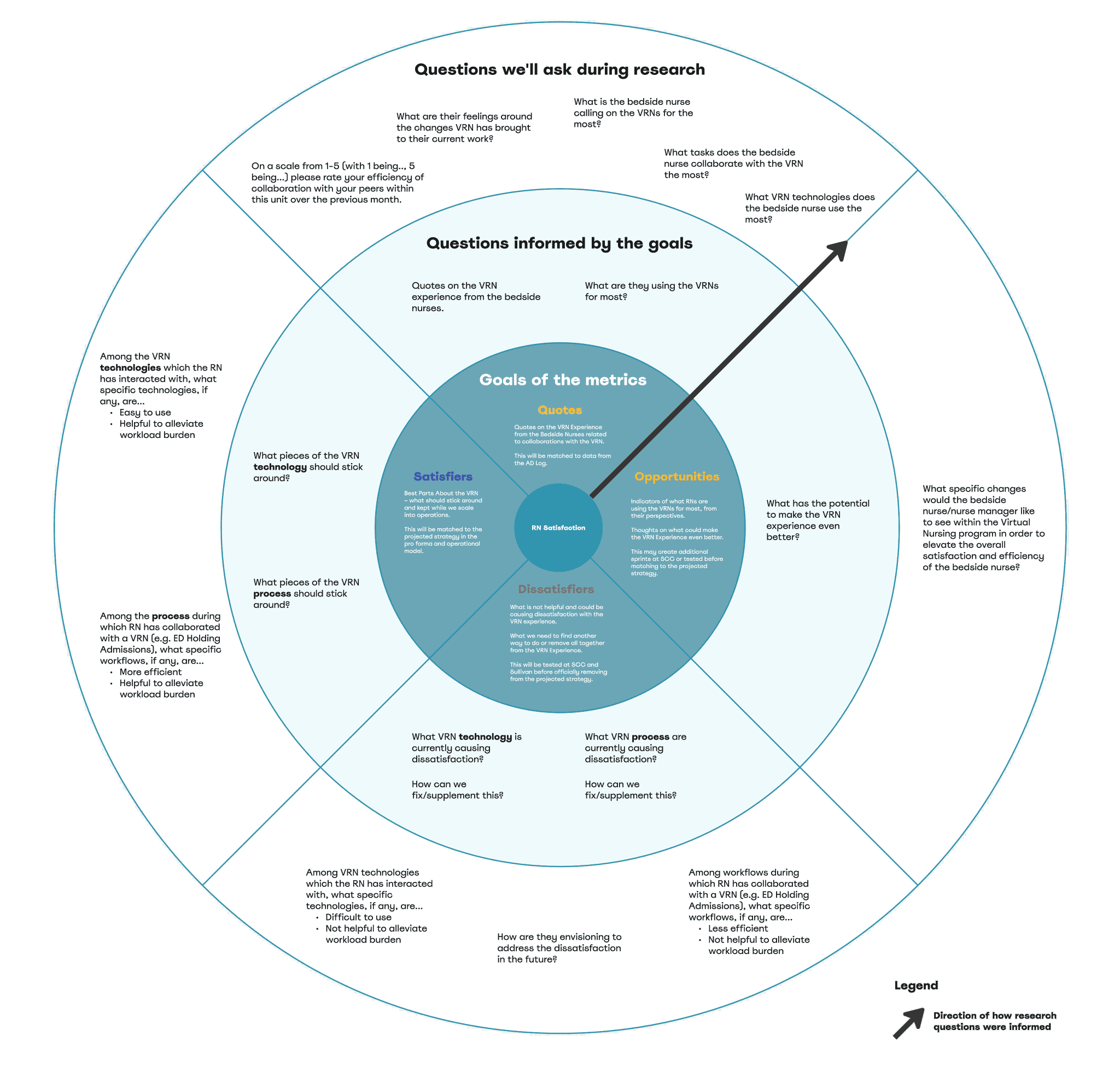
we asked 60 nurses + 3 managers how their jobs are going
To keep our research in synch with the pilot, during which each technology combination rolls out at a different phase, we visited the testing units during each phase.
Knowing that nurses are always hands-on and busy in their unit, here are the research approaches we chose, along with how we believe they will help answer our questions:
- Contextual inquiries. We follow nurses as they work in the unit and observe how they interact with the technology.
- Interviews. We gain deeper insights into unit performance by talking to the nurse manager of each testing unit.
- Short surveys. Measuring changes in work satisfaction across pilot phases.
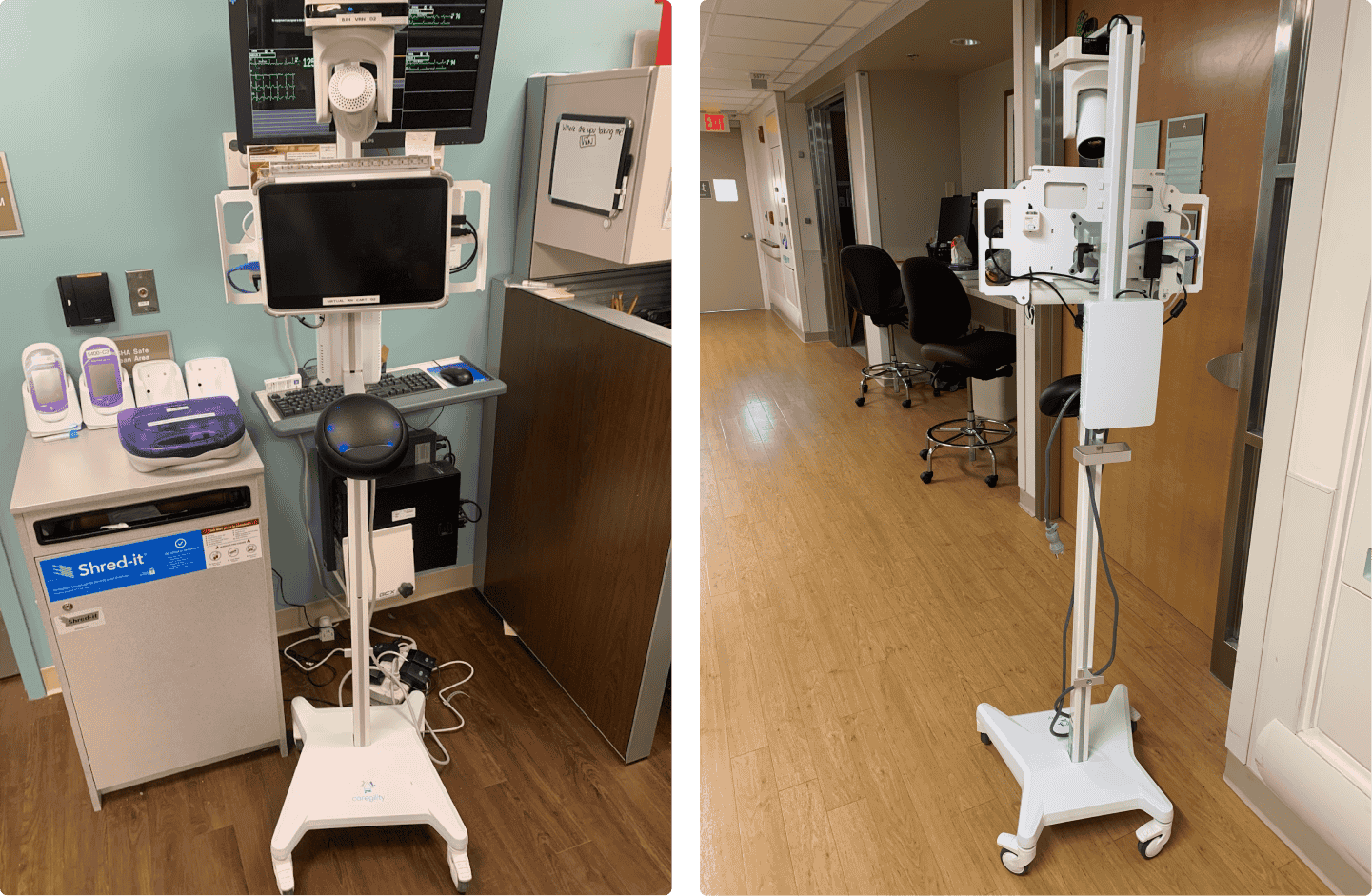
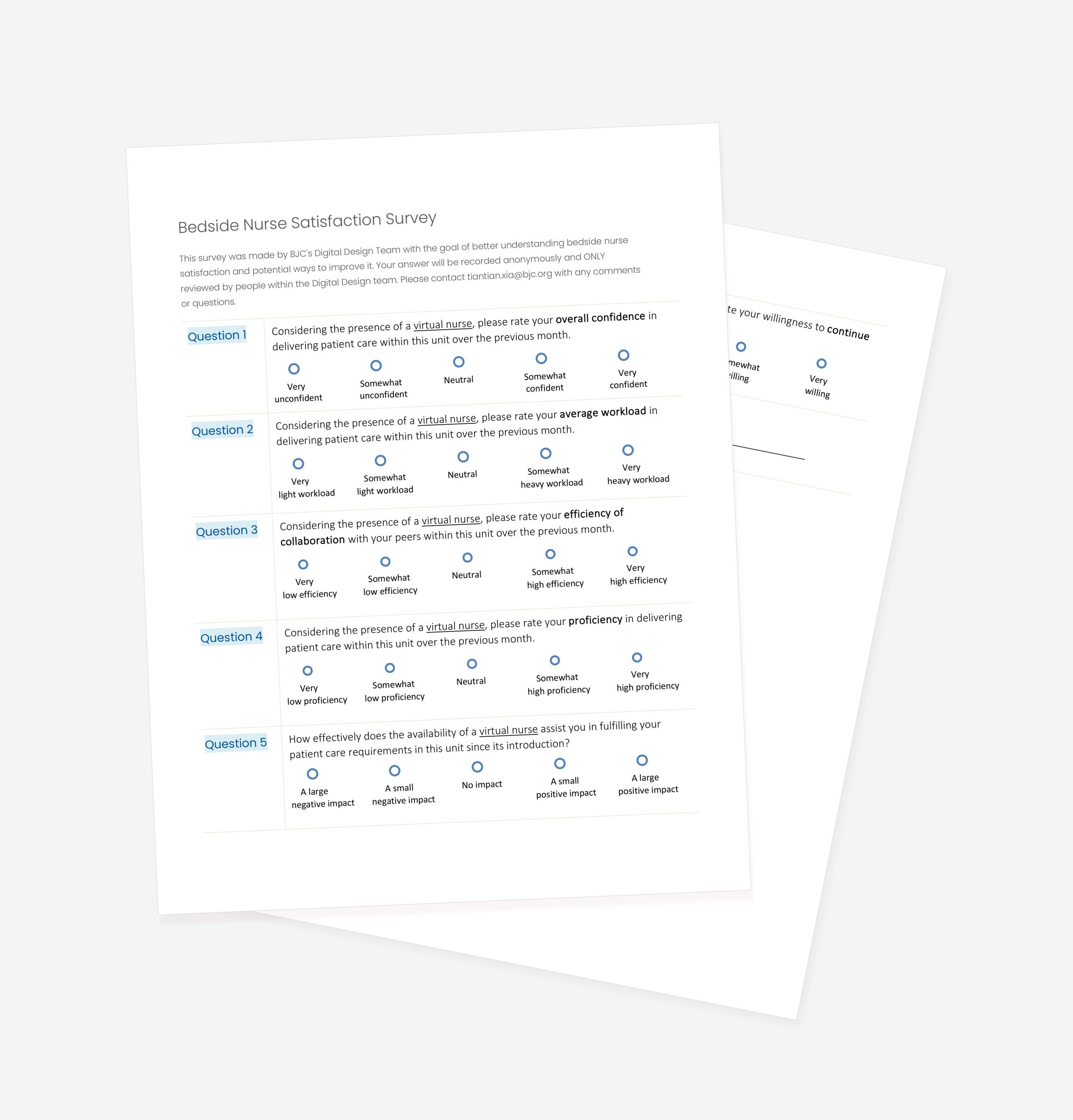
A valuable setback we later discovered was that our survey results conflicted with qualitative insights and caused confusion during presentations. This was because our measure of satisfaction didn't successfully filter out the environmental and personal factors that brought noises to the result, and we had a small sample group. In other words, if a unit was significantly busier during the time nurses filled out the survey, they tended to respond with a higher workload and lower satisfaction score, which led to recency bias and primacy bias.
As a workaround, we focused on reflecting nurse satisfaction in our qualitative insights, and for quantitative insights, we asked nurse managers to obtain nurse recruitment and retention rate for their units, which are less subject to noise factors.
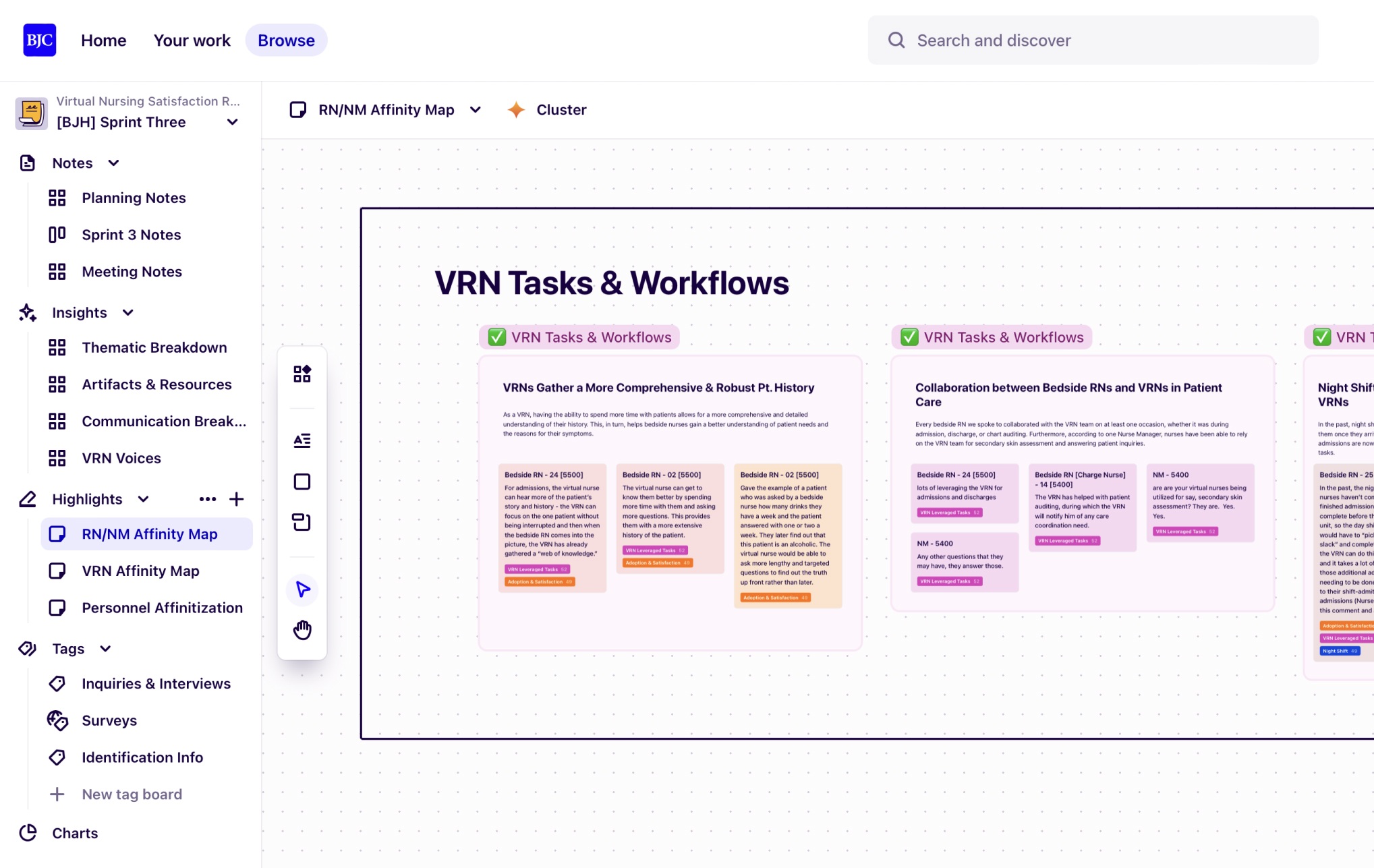
some interesting findings that stood out to us
Nurses appreciate the introduction of virtual nursing regardless of which technology they use.
The volume of the speaker causes privacy concerns because patients with hearing impairment need to turn up the volume to hear. Patients from other rooms sometimes can overhear their conversations.
- Allows higher-quality conversations during patient admissions because of more stable connections.
- Detracts from continued usage for its clunkiness and manual nature to move.
- Enables more independent virtual workflows, such as rounding and secondary skin assessments, because of the camera's capability to pan, tilt, and zoom.
- More accessible for patients to see and interact with virtual nurses.
- Subjects to network issues more frequently.
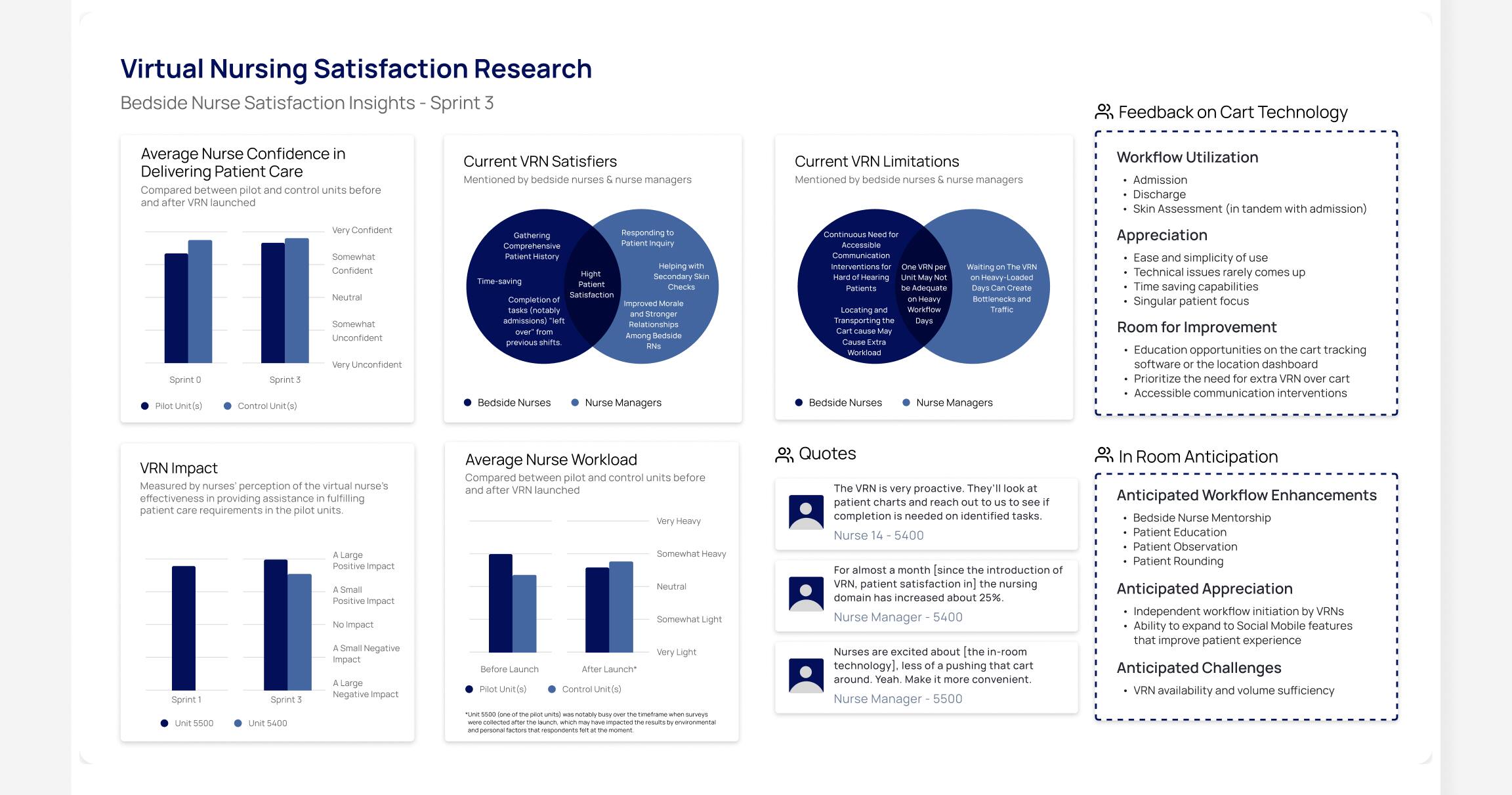
the result
executive report to inform project stakeholders and provide recommendations.
improvements in nurse recruitment and retention.
by the organization as a project that advocates for a human-centered-design.
In addition, I was able to help the team build a tight relationship with stakeholders that had never been achieved before. I was extremely proud when hearing the following feedback from my project manager:
“I know I was reluctant to have an intern on the program, but the fresh pair of eyes helped us start with a clean slate and get us to here. ... I've been impressed with Ray's skills - you do not seem like your typical intern!”
kudos
As the only intern on the Digital Design team, I felt like being supported by eleven bigger brothers and sisters. Every member has their own cool specialty and are passionate about sharing it with others. My experience would not be so accomplishing without learning from them. Kudos to everyone!

Personalizing virtual assistant demos